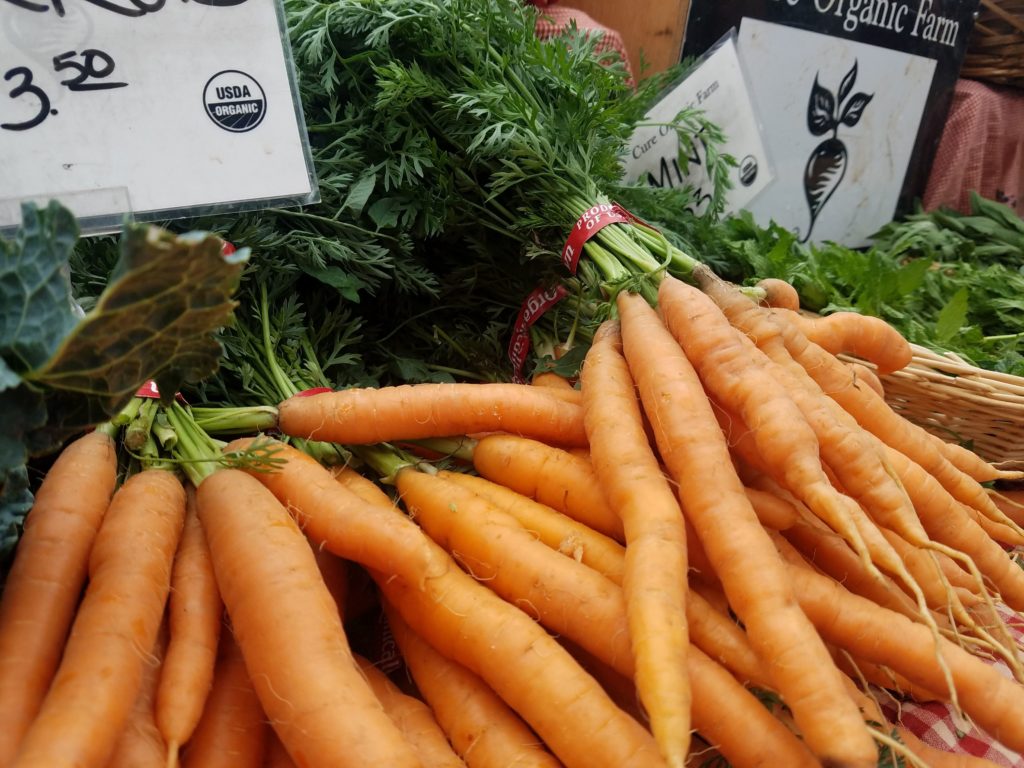
With the official unemployment rate approaching 15 percent, the number of food insecure families is growing. This can be seen in a dramatic increase in applications for SNAP benefits and in the long lines at food banks and emergency feeding sites across the country. This difficult situation is made even worse because as the demand for food from struggling families surges, many farmers have surplus food available as they have lost their customers due to closures of farmers markets, schools, and restaurants.
To help address this imbalance and connect families in need to farmers who have food but have lost their markets, Representative Kim Schrier (D-WA) recently introduced The Farmers Feeding Families – Coronavirus Response Act (H.R. 6721) with cosponsors Representatives Cathy McMorris Rogers (R-WA); Chellie Pingree (D-ME); Susan DelBene (D-WA); and Derek Kilmer (D-WA). Senator Bob Casey (D-PA) introduced the Senate companion bill (S. 3655).
The Farmers Feeding Families – Coronavirus Response Act (Farmers Feeding Families Act) would provide $200 million in direct funding to states to help them to purchase food from their farmers and provide it directly to their local and regional food banks and other Emergency Feeding Organizations (EFOs). It greatly expands on the successful farm to food bank model to help farmers meet the current, unprecedented need. The Farmers Feeding Families Act is a bill crafted to inform the current debate in Congress and help shape the next round of Congressional response to the ongoing pandemic.
Farmers Feeding Families – Coronavirus Response Act Overview
Much of the food that is normally provided to food banks, food pantries, and other EFOs comes from The Emergency Food Assistance Program (TEFAP). The food provided through TEFAP is generally farm commodities that the US Department of Agriculture (USDA) buys through regular wholesale channels. This action is intended to lift prices on certain commodities and is part of a longstanding practice of stabilizing commodity markets. USDA purchases hundreds of millions of dollars worth of US produced commodities each year and then distributes them to the emergency feeding system.
The coronavirus pandemic has created an enormous demand on the food bank system and Congress responded by providing billions in additional funding for USDA to purchase, procure, and distribute USDA farm commodities to EFOs. However, the existing USDA Commodity Procurement system is a large, complex system, not well suited to respond to an immediate crisis. The first commodity purchases made by the USDA using coronavirus response funding through the TEFAP system are not expected to arrive at food banks until later this summer. Additionally USDA commodity procurement heavily favors large scale producers and national processors, packers, and distributors who can move huge volumes of product and navigate the complex bidding process. This makes it difficult for small and mid-sized farms, many of whom lost their local and regional markets due to the pandemic and have fresh, wholesome food available, to participate in the program.
The Farmers Feeding Families Act was developed to respond to the limitations of the USDA commodity procurement system and TEFAP by sending $200 million directly to state agencies to purchase, procure, and distribute food to needy families. States can utilize existing EFOs and purchase directly from farmers in their state helping local families and local farmers. To help farmers left out of TEFAP to contribute to the needs in their communities, the bill includes targeting and set-aside language to ensure that a minimum level of purchases of food come from small to mid-sized farms that sell into local and regional food markets such as schools, institutions and restaurants. To help the EFOs deal with an expanded channel of local food products, the Farmers Feeding Families Act will also provide funding to the states to purchase or lease refrigerated vehicles and storage and other equipment necessary to procure and distribute local food products, including personal protective equipment for workers and volunteers involved in the harvesting, transporting, processing, distribution, and delivery of the food.
The HEROES Act and Next Steps
Last week the House of Representatives unveiled and passed their coronavirus relief package, The Health and Economic Recovery Omnibus Emergency Solutions (HEROES) Act. The HEROES Act contained a number of important provisions to help meet the needs of food insecure families and farmers but it also missed several opportunities to help farmers and hungry families. One example is a provision of the HEROES act that would send $25 million to states to help cover costs of harvesting, processing, packaging, and transporting commodities displaced from commercial food service and provide it to EFOs. This could be improved in the Senate version of the next coronavirus response bill by including language to target or prioritize resources to small farmers and those selling into local food systems and permitting the use of funding to purchase food directly from farmers as proposed in the Farmers Feeding Families Act. It is also clear that $25 million is too small an investment given the demand and $200 million in the Farmers Feeding Families would do more to help families and farmers.
As the Senate begins to develop and negotiate their response to the HEROES Act, NSAC will be working with our members to build support for the Farmers Feeding Families Act (S. 3655) in hopes that the Senate will build upon the House bill. Including language to ensure small farms and local food producers will be supported, allowing funds to be used to purchase food in addition to harvest and other attendant costs, and increased funding for the program on par with the scale of the crisis are all worthy of inclusion.
.


Factory farming has not been good for the environment, the economy, or the health of the nation. Through the current method, we overproduce, but then waste. The poor go unfed. Small farmers go under. The time is now to change.